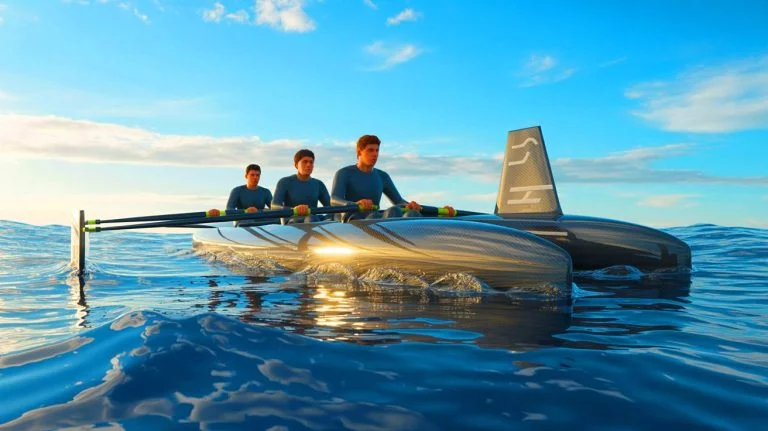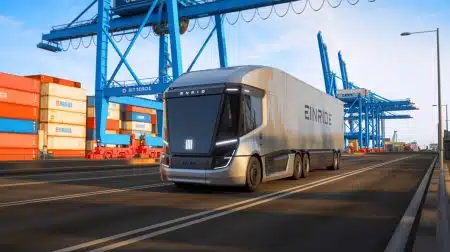| IN A NUTSHELL |
|
The Maclean brothers are attempting an extraordinary feat by rowing across the vast Pacific Ocean in a boat inspired by Formula One technology. Their 9,000-mile journey is not just an adventurous undertaking but also a charitable mission to raise funds for clean water projects in Madagascar. By combining engineering prowess with a noble cause, these Scottish siblings aim to set a new world record for the fastest unsupported three-man row across the Pacific. Their journey began in Lima, Peru, and is expected to culminate in Sydney, Australia, highlighting their remarkable endurance and commitment to innovation.
Engineering Marvel: The Formula One Inspired Boat
The Maclean brothers’ vessel, named Emily-Rose, stands out as a marvel of modern engineering. This boat, co-designed with the Ocean Rowing Company, is constructed from carbon-fiber materials commonly used in Formula One racing. Weighing a mere 280 kilograms when unladen, it represents a significant evolution from their previous Atlantic mission’s 2,200-pound vessel. The lightweight design enables the boat to glide over waves efficiently, while still carrying enough provisions for a journey lasting up to 150 days.
The use of F1-grade materials is a testament to the brothers’ pursuit of perfection. Every element of the boat has been meticulously crafted to ensure maximum performance and durability. This focus on efficiency is critical in ocean rowing, where even marginal gains can make a substantial difference. Ewan Maclean, an engineer at Dyson, emphasized the importance of these enhancements: “Ocean rowing is a sport of marginal gains,” he said, highlighting how even slight improvements can reduce daily frustrations on such a demanding journey.
Innovative Use of 3D-Printed Parts
A key aspect of the Maclean brothers’ success lies in their innovative use of 3D printing technology. Utilizing a Form 4 3D printer from Formlabs, they produced over 40 custom parts for their boat. These include ergonomic rowing seats designed from 3D scans of their bodies, a removable bed for the boat’s rear, and specialized mounts for satellite communication systems. This approach allowed for rapid prototyping and customization, ensuring that the boat was tailored to their specific needs.
Ewan Maclean was particularly impressed with the strength of the new engineering resins, which came close to the robustness of production parts. Many components, such as the gimbal stabilizing their Jetboil stove, were added shortly before their departure. The brothers’ innovative spirit is encapsulated in Ewan’s words: “There couldn’t be much more of a test … than rowing across an ocean.” This ingenuity extends to the Starlink satellite system, which is mounted on a 3D-printed fixture designed to withstand UV, salt, and impact stress, ensuring seamless connectivity throughout their journey.
Charitable Mission for Clean Water
While technological innovation is a significant part of their journey, the Maclean brothers are equally driven by their humanitarian mission. By attempting this record-breaking feat, they aim to raise £1 million for clean water projects in Madagascar. Their nonprofit organization, the Maclean Foundation, collaborates with local partners to establish boreholes in the Ambohimanarina municipality. Currently, a mere 14% of the population there has access to safe drinking water, underscoring the critical need for such initiatives.
The brothers’ efforts to provide long-term access to clean water demonstrate a commitment to global welfare that goes beyond personal accolades. This mission reflects a broader understanding of how technology and endurance can bring about meaningful change in underprivileged communities. By combining their rowing adventure with a charitable cause, they have inspired many to contribute to a vital global issue.
A Legacy of Record-Breaking Endeavors
The Maclean brothers are no strangers to setting records. Prior to their current Pacific rowing challenge, they conquered the Atlantic Ocean in 2020, setting a record by completing the crossing in just 35 days. This experience prepared them for the challenges of their current journey and has undoubtedly contributed to their strategic planning and execution.
As they approach the final leg of their Pacific adventure, the Macleans continue to capture the world’s attention with their pioneering spirit and dedication to making a difference. Their story is not only one of personal triumph but also a reminder of the extraordinary things that can be achieved through innovation, resilience, and a commitment to humanitarian causes. As they near their destination, the question arises: How can we, as a society, leverage technology and innovation to address pressing global challenges?
Did you like it? 4.6/5 (26)








Wow, a 9,000-mile journey? These guys are either brave or crazy! 🚣♂️
Is it really safe to rely on 3D-printed parts for such a long and dangerous journey?
Thank you, Maclean brothers, for raising awareness about the clean water crisis in Madagascar. 🌍💧
I’m curious, how does a boat “inspired” by F1 technology differ from a regular rowing boat?
Is it just me, or does this sound like a plot from a movie? 😂
Why aren’t more people talking about this? It’s incredible!
How are they managing food and water supplies for such a long trip?
Good on them for raising money for a great cause. Hope they reach their goal!
Using F1-grade materials sounds expensive. Who’s funding this mission?
Do the brothers have any backup plans if the boat fails?
I love the combination of technology and humanitarianism in this project. ❤️
The Maclean brothers are an inspiration to us all. Keep it up! 🚀
What measures are in place to ensure their safety throughout the journey?
How long is this journey expected to take? Sounds exhausting!
Are they documenting their journey? I’d love to see a documentary.
Isn’t it risky to rely so much on technology in the middle of the Pacific?
This is both crazy and amazing. Best of luck to them! 🍀
How did they come up with the idea to use a 3D printer for boat parts?
What happens if they encounter bad weather? Any contingency plans?
Thank you for bringing attention to Madagascar’s water issues. 👏
Is there a way to track their progress online? Would love to follow along!
How do they stay connected with the outside world while at sea?
Honestly, this sounds more like a stunt than a mission for a cause. 🤔
Would love to see more people doing things like this to help the world.
Why focus on Madagascar specifically for the clean water projects?
Did they have to train a lot to prepare for this rowing challenge?
What a unique way to combine adventure with charity. Truly inspiring! 🌟
Have they faced any major challenges or setbacks so far?
Are they going to set any new records with this journey?
Can’t wait to hear about their experiences once they finish!
How can I donate to their cause? I want to help! 💸
It’s great to see innovation being used for such a good cause. Keep it up! 🤗